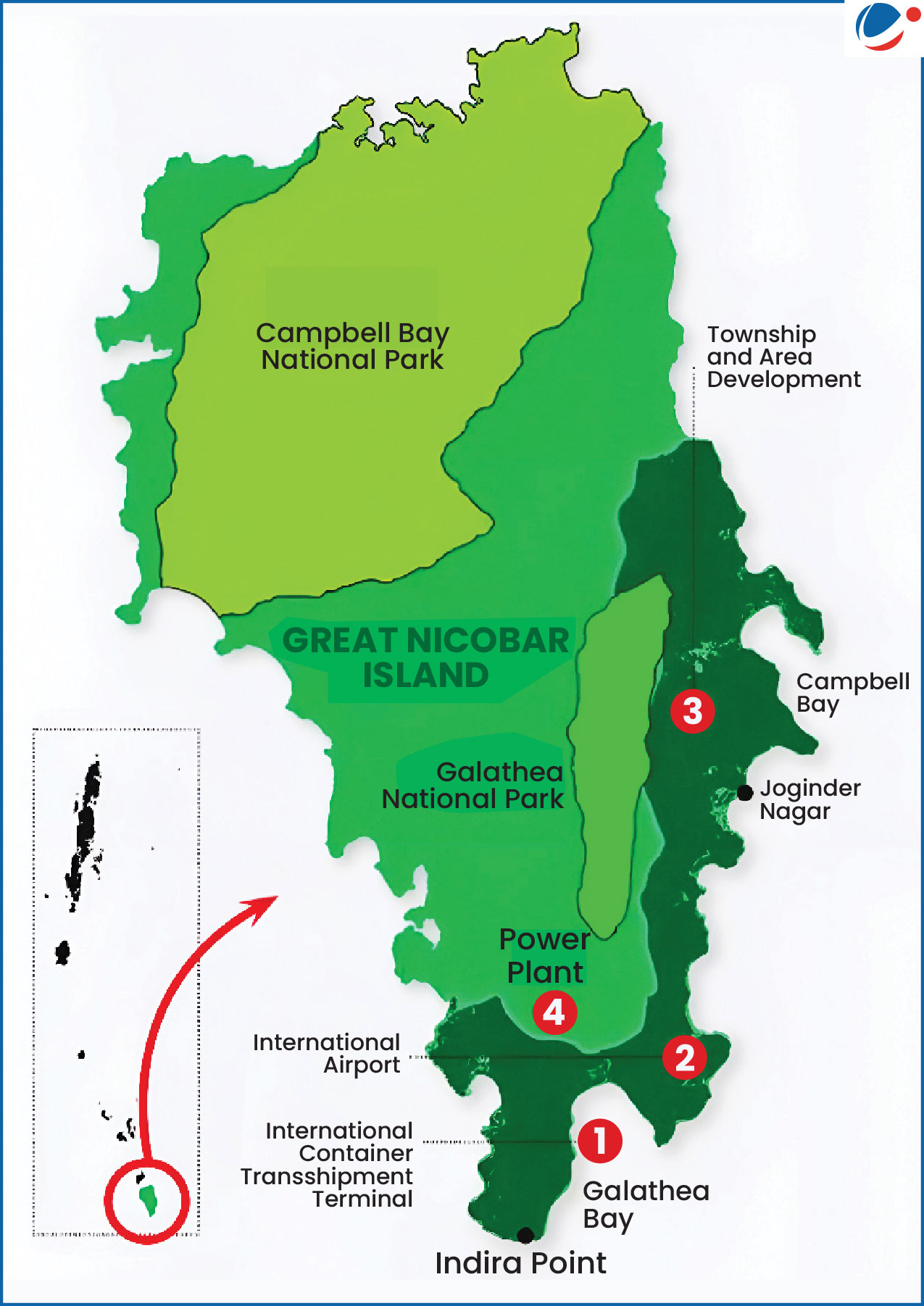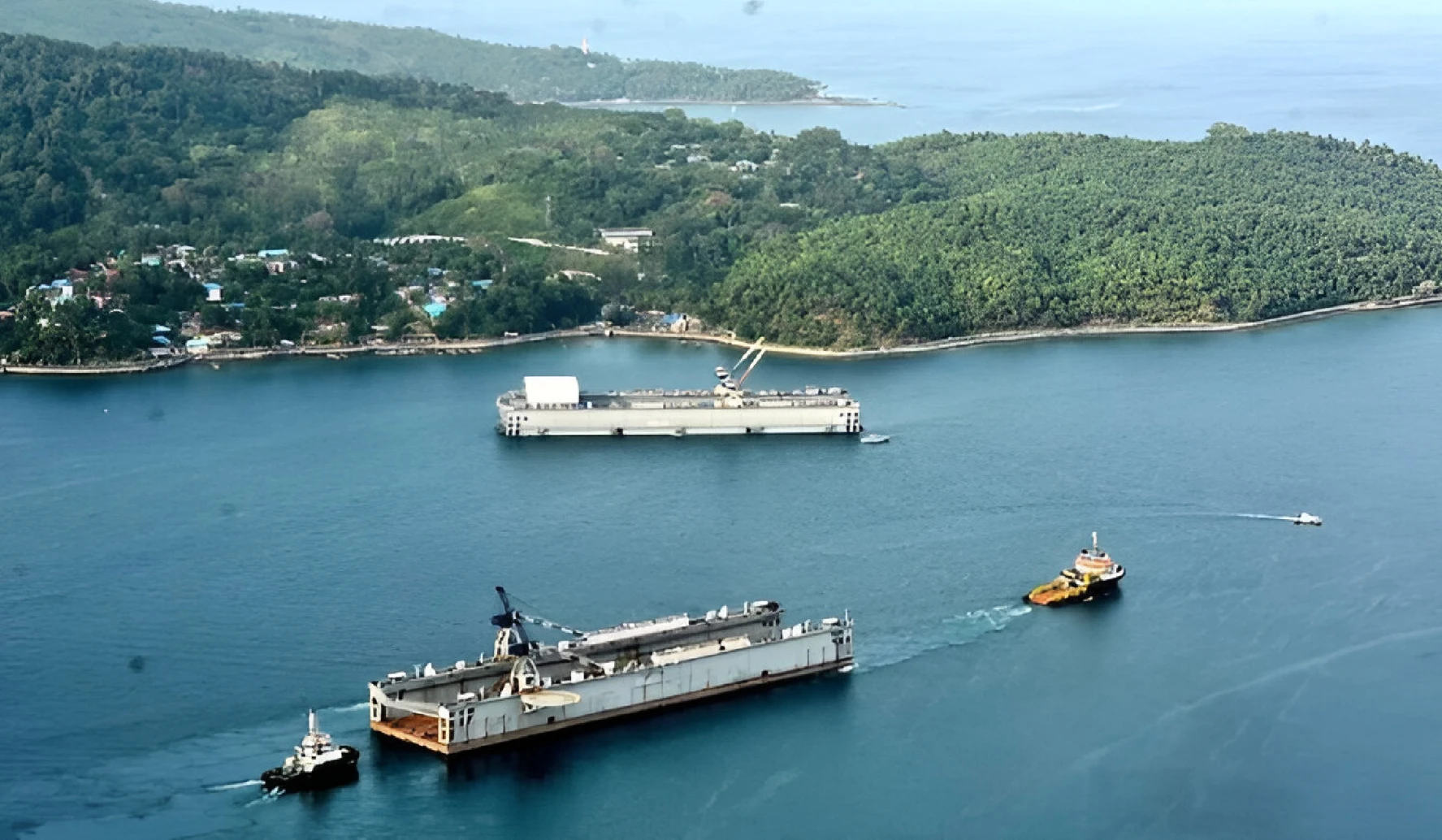Why in the News?
Union Ministry of Tribal Affairs recently sought a factual report from the Andaman and Nicobar Islands administration on complaint that forest rights had not been settled under Forest Rights Act, 2006 before diverting forest land for Great Nicobar Island Project.
More on the News
- Tribal Councils in the Andaman and Nicobar Islands are statutory bodies established under the Andaman and Nicobar Islands (Tribal Councils) Regulation, 2009.
- They have limited advisory and executive powers, unlike autonomous councils under the Sixth Schedule of the Constitution, which have legislative, executive and limited judicial powers and enjoy greater autonomy.
- Andaman and Nicobar Islands administration has maintained that it does not need to implement the Forest Rights Act (FRA), arguing that tribes people's rights to the forest were already protected on the Islands under the Protection of Aboriginal Tribes Act, 1956 (PAT,56).
- PAT,56 gives the local administration unilateral authority to divert forest land, whereas the FRA mandates consent to be obtained from the Gram Sabhas concerned after recognising and vesting rights in them.

About Great Nicobar Island Project
- Genesis: It is a massive Greenfield infrastructure project conceived by NITI Aayog and approved by the Union Cabinet in 2021.
- Nodal Agency: Andaman and Nicobar Islands Integrated Development Corporation (ANIIDCO), incorporated in 1988 as a Government Undertaking under the Companies Act 1956.
- Project Components:
- International Transshipment Port – Galathea Bay: A deep-sea port to be developed at Galathea Bay on the island's southern coast.
- Ministry of Ports, Shipping and Waterways (MoPSW) will oversee transhipment port project.
- A Greenfield international airport
- A 450 MW power plant
- A modern township
- International Transshipment Port – Galathea Bay: A deep-sea port to be developed at Galathea Bay on the island's southern coast.
Significance of the Project
- Strategic location: Great Nicobar Island's geostrategic position makes it critically important for India's security and maritime influence.
- It is located at the mouth of the Malacca Strait, one of the world's busiest shipping lanes, accounting for passage of one-third of global sea trade.
- It is also close to Sunda Strait, Lombok Strait, and the Coco Islands, all of which are important choke-points in the Indo-Pacific region.
- Regional maritime hub: Transhipment port will attract cargo traffic that currently goes through Singapore or Colombo by leveraging Great Nicobar's proximity to the busy Malacca Strait.
- Currently, nearly 75% of India's transhipped cargo is handled at ports outside India.
- Improving connectivity: Island's connectivity to the Indian mainland and other destinations will improve, making the island more accessible for tourism, trade, and strategic logistics.
- Defence: By developing a naval-capable deep-water port and airfield on Great Nicobar, the project will bolster the existing tri-services military command in the Andaman & Nicobar Islands.
- The project will allow India to station ships, aircraft and drones closer to the strategic crossroads of the eastern Indian Ocean to monitor critical sea lanes and enhance India's security sphere in the region.
- Economic growth and regional development: Transhipment port will accrue significant benefits such as forex savings, foreign direct investment, increased economic activity at other Indian Ports, enhanced logistics infrastructure, etc.
Ecological, Social and Geological Concerns
- Tribal Rights: There are concerns that project will negatively impact the tribes of Great Nicobar Island, Shompens (a Particularly Vulnerable Tribal Group) and Nicobarese.
- It can lead to displacement of the tribal population; large-scale migration of workers and settlers could expose the Shompen to infectious diseases against which they have no immunity, etc.
- Ecological Concerns: Great Nicobar is one of the richest biodiversity zones in India with over 85% still covered in tropical rainforest.
- Impact on Species: Galathea Bay, the site of new port, is a protected wetland under Ramsar Convention and is most important nesting site for endangered Leatherback Sea Turtle.
- Conservationists fear that constructing the port will require dredging millions of cubic meters of seabed, which could destroy coral reefs and seagrass meadows, and disturb the turtles' nesting beaches.
- Deforestation: Project will lead to the cutting of approximately 9.6 lakh trees and negatively impact the carbon sequestration capacity of the region.
- Shoreline Changes: Development also undermines natural coastal defences. e.g., the mangrove belts at Galathea that help buffer tsunamis and storms would be removed.
- Impact on Species: Galathea Bay, the site of new port, is a protected wetland under Ramsar Convention and is most important nesting site for endangered Leatherback Sea Turtle.
- Geological and Disaster Risks: Great Nicobar is located in a highly seismic zone and sits atop the same megathrust fault line that triggered the devastating Indian Ocean tsunami in December 2004.
Conclusion
While Great Nicobar Project has the potential to strengthen connectivity, trade, and defence is undeniable, the ecological fragility, tribal rights, and disaster vulnerabilities of the island cannot be overlooked. A path forward lies in adopting a phased, ecologically sensitive, and community-inclusive model of development that safeguards biodiversity and cultural heritage, while ensuring national interests are advanced responsibly.





